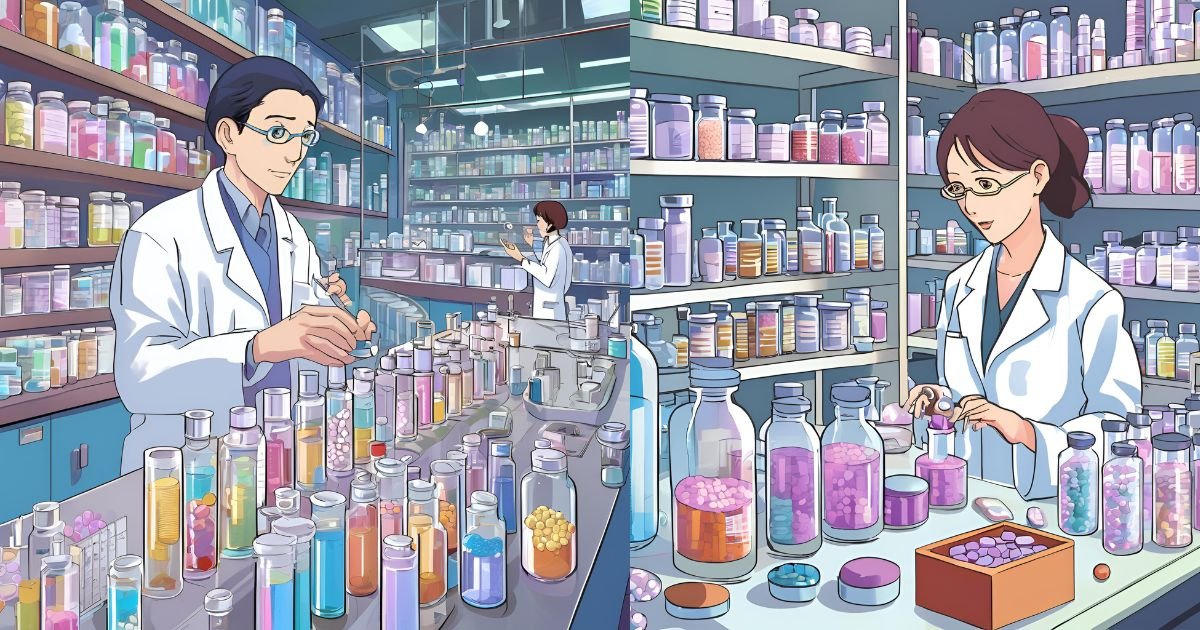Introduction
Drug Development and Industrial Pharmacy is a lengthy, complex, and expensive process that aims to discover, design, and bring new pharmaceutical products to market. It involves research to identify potential drug candidates, extensive laboratory and animal testing to determine safety and efficacy, clinical trials to evaluate the drug’s effects in humans, and regulatory review and approval before the drug can be marketed. Industrial pharmacy focuses on the science and technology involved in the manufacture, quality control, supply, and use of medicines on an industrial scale. It plays a critical role in translating drug candidates that successfully emerge from the development process into products that can be reliably mass-produced and distributed. This essay provides an overview of the key stages and considerations in modern drug development, as well as the application of industrial pharmacy in scaling up production and ensuring the quality of new drugs.
Read More: Some Common Mental Health Disorders
Read More:
Stages of Drug Development and Industrial Pharmacy
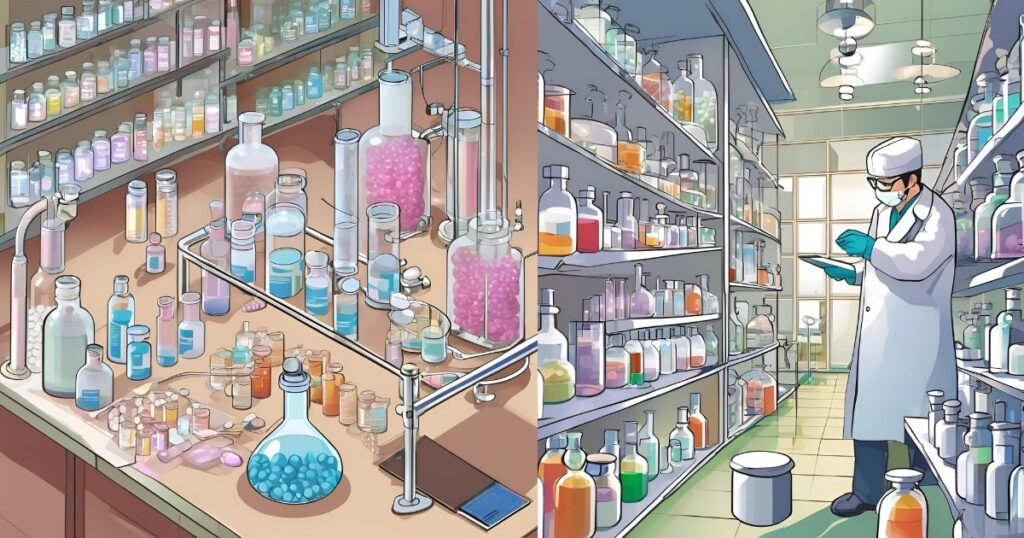
Drug discovery and preclinical testing
The first stage of drug development aims to identify promising compounds that may have therapeutic effects. Historically, this was done by testing chemicals and plant extracts for potential benefits, but modern drug discovery relies heavily on high-throughput screening of libraries containing hundreds of thousands of small molecules against proposed drug targets. Bioinformatics, structure-based molecular design, and genomics approaches further guide the design or optimization of lead compounds with more desirable pharmacological properties. Extensive in vitro and in vivo testing then evaluates the lead candidate’s pharmacodynamics (mechanism of action and physiological effects), pharmacokinetics (absorption, distribution, metabolism, and excretion), and potential toxicity before allowing it to advance. On average, this stage takes 3-6 years and results in just a handful of promising candidates.
Preclinical development
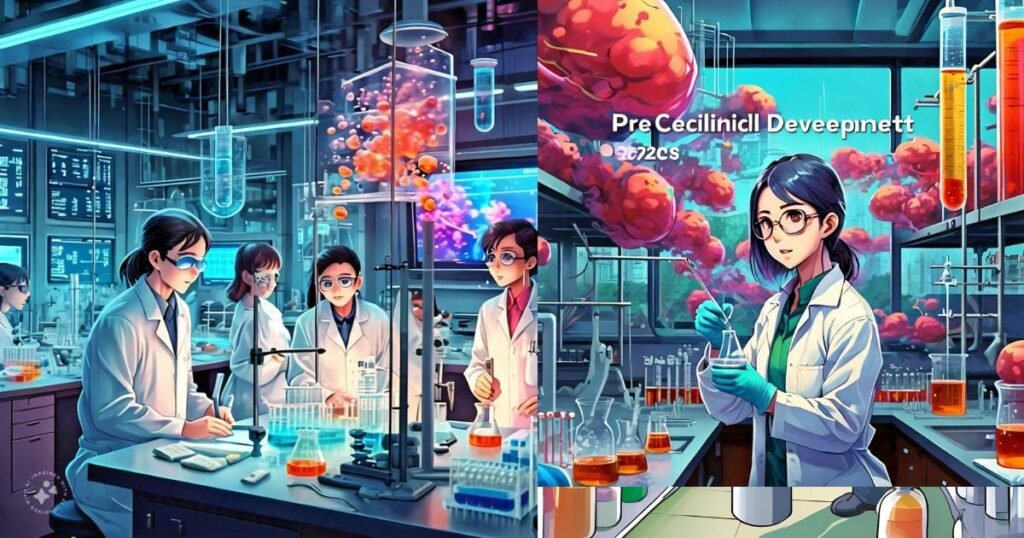
The goal of preclinical development is to preliminarily determine the drug candidate’s safety and effectiveness through more rigorous laboratory and animal testing before trials in humans can begin. Formulation studies are done to select optimal dosage forms and formulations for the delivery of the drug. Pharmacokinetics, toxicity, and metabolism are further characterized through in vitro assays and in vivo animal studies to determine optimal dosing, administration routes, and potential side effects. Large animal studies help determine appropriate doses to test in humans and may reveal potential risks. Production of the drug needs to be scaled up for clinical studies and meet stringent quality standards. Extensive documentation known as the Investigational New Drug (IND) application must be compiled and submitted for FDA review before clinical trials are permitted to start.
Clinical Development
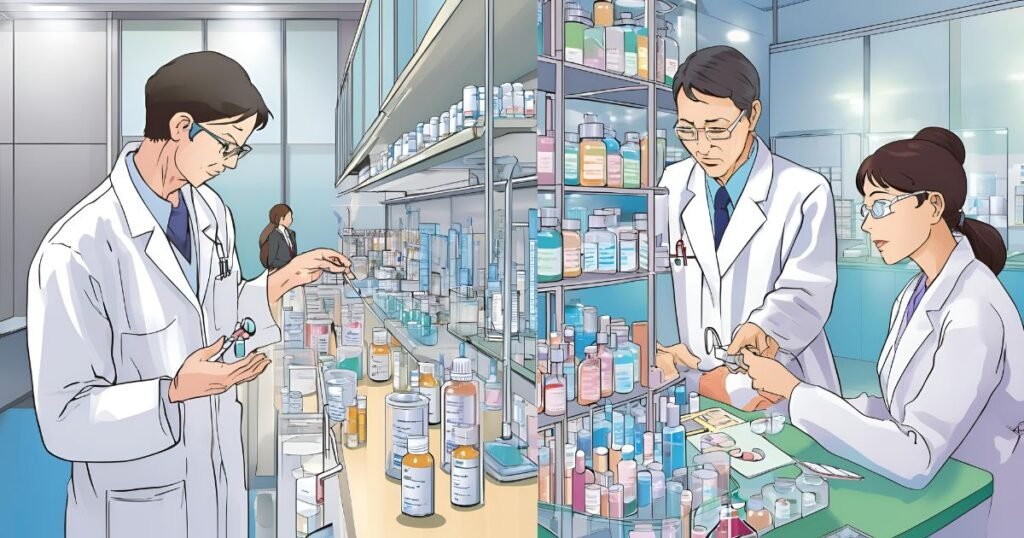
Clinical development is the lengthy stage of testing the drug in human subjects to definitively determine the safety and efficacy required for regulatory approval. It is divided into three phases, each with increasing numbers of participants and decreasing flexibility in trial design. Phase I trials are first-in-human studies with 20-100 healthy volunteers that aim to characterize pharmacokinetics and pharmacodynamics, determine dosing, and monitor for adverse effects. Phase II trials evaluate therapeutic efficacy and side effects in several hundred patients with the target disease. Phase III consists of large randomized multicenter trials in hundreds to thousands of patients to conclusively demonstrate the drug’s effects compared to placebo or standard treatments and monitor for rarer adverse events. Positive Phase III results are required for regulatory submission of a New Drug Application (NDA) or Biologics License Application (BLA). Clinical development takes 6-7 years on average, with a high rate of candidate failure, especially in later phases.
Regulatory Review and Approval

The fourth stage is the submission of all preclinical and clinical data to regulatory agencies like the U.S. Food and Drug Administration (FDA) for review. The FDA will assess whether the drug is safe and effective for its proposed uses based on the data, inspect manufacturing facilities, and determine if the drug’s benefits outweigh its risks before deciding on approval. Advisory committees often guide close calls. Post-marketing surveillance studies may be required to further characterize safety risks. Gaining regulatory approval generally takes 1-2 years. Overall, the entire process from drug discovery through approval takes 10-15 years on average, with the cost of bringing a new drug to market estimated at $1-2 billion.
Role of Industrial Pharmacy and Pharmaceutical Manufacturing
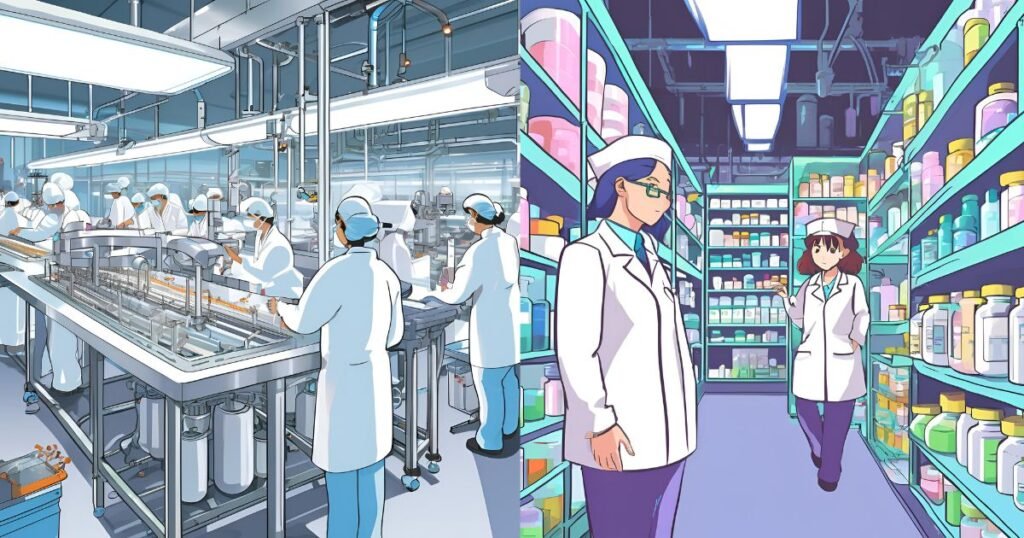
While drug development aims to discover and test new drug products, industrial pharmacy focuses on reproducible manufacturing and quality control to bring drugs to market. Ensuring consistent and sufficient production of a high-quality drug at an affordable price point is critical but challenging when scaling up from small laboratories to industrial batches. Important considerations include:
Process chemistry: The chemical synthesis or extraction method must be optimized and scaled up, which often requires different reagents, conditions, or techniques that improve efficiency and yields versus the small scale.
Formulation: Excipients, specialized drug delivery systems, and dosage forms are engineered to optimize drug absorption and stability while maintaining efficacy and acceptable shelf life.
Analytical chemistry: Robust analytical methods need development to test starting materials, intermediates, and final drug products to ensure quality specifications are consistently met.
Manufacturing: The manufacturing process including equipment, facilities, and suppliers must meet regulatory standards for current Good Manufacturing Practices (cGMP). Automation, process controls, and Quality by Design approaches help ensure quality.
Supply chain: Reliable supply chains are established for procurement of starting materials, packaging, distribution to clinical sites and wholesalers, and other logistics.
Stability testing: Controlled studies determine shelf life and proper storage conditions to ensure the drug remains effective until expiry.
Product testing and release: Each batch must undergo quality control testing before release to ensure it meets specifications. Some testing continues after release through stability monitoring programs.
Licensing and IP: Licenses negotiated with patent holders or process innovators allow manufacturing rights. Patents and exclusivity periods protect IP.
Documentation: Extensive documentation and standard operating procedures are required; any changes during development must be traced.
Applying industrial pharmacy principles enables successful scale-up and launch of new drugs so that innovative new medicines can reliably reach patients in need.
Read More: Drug Development
Bringing new pharmacological treatments from initial discovery to approved, mass-produced medicines is a complex, lengthy, and expensive undertaking. Advances across drug development science and technology have increased our ability to identify promising compounds and evaluate them through years of preclinical and clinical studies required for regulatory approval. Meanwhile, industrial pharmacy provides the knowledge and tools to translate basic research into standardized, quality manufacturing capabilities so new drugs can be launched successfully. Ongoing research across both drug development and pharmaceutical manufacturing sciences is critical for developing innovative new therapies and ensuring they are available, affordable, effective, and safe for patients who need them.

